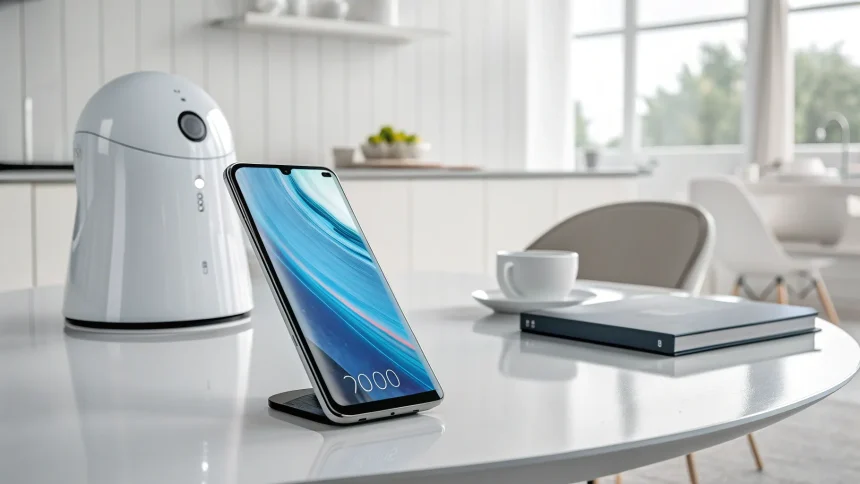Honor signaled its next big bet in mobile technology, saying it will share more on an artificial intelligence-powered “robot phone” next year. The Chinese smartphone maker offered a brief update that hints at a new class of device, raising questions about how AI could change hardware design and daily use. The company did not share a date, features, or pricing, but the notice sets expectations for a fuller reveal in the year ahead.
What Honor Said
Honor said it would release more details about the artificial intelligence-powered robot phone next year.
The announcement was short on specifics. No executives were named and no technical descriptions were provided. Yet the wording suggests more than a typical software upgrade. The phrase “robot phone” points to functions that could act, anticipate, or assist in ways that go past standard voice assistants.
Background and Context
Honor, once a sub-brand of Huawei, became an independent company in 2020. Since then it has tried to move upmarket with its Magic series and foldable devices. The company has emphasized on-device AI features, such as privacy tools, image processing, and context-aware assistants, in line with a broader shift across the smartphone sector.
Rivals have made similar moves. Apple has begun rolling out on-device features under its latest software updates. Samsung has highlighted translation, summarization, and photo editing tools that run locally or in the cloud. Chinese competitors, including Xiaomi and Oppo, also promote AI-enhanced cameras and assistants. Honor’s teaser suggests it aims to stand out by linking AI to hardware behavior, not just apps.
Why a “Robot Phone” Matters
The term hints at a device that senses and takes actions with less user input. That could mean deeper automation, context awareness, and proactive help. It may include motion control, haptics, or accessories that extend what a phone can physically do. If so, hardware could shift from a passive screen to something more interactive.
Privacy and energy use will be central. Advanced models that live on the device can protect data and reduce latency. But they demand stronger chips, better thermal design, and smart power management. Cloud links can add capacity but raise cost and privacy questions. Honor’s plans will be judged on how it balances these trade-offs.
The Competitive Context
Phone makers are betting that AI can restart growth in a market that has seen longer upgrade cycles. The pitch is simple: smarter features make daily tasks faster and more personal. The challenge is proving real gains, not just demos.
Honor’s approach could push three areas:
- On-device intelligence that works offline for speed and privacy.
- New sensors or form factors that let the phone act in the physical world.
- Deeper ties between the phone and home, car, or wearables for automation.
If the device blends these parts in a practical way, it could shake up how users judge value. That would pressure rivals to match functions, prices, and support timelines.
Technical Questions Ahead
Key unknowns remain. Will the device use custom silicon or partner chips from Qualcomm or MediaTek? How much AI will run locally versus in the cloud? Can the battery support heavy models without rapid drain? And what safety guardrails will govern autonomous actions?
Software policy will also matter. If the phone triggers physical tasks, users will need clear controls, simple opt-outs, and logs for transparency. Repair and durability will be part of the equation if moving parts or novel modules are involved.
What to Watch Next
The next milestones will likely include a design preview, a feature list, and regional launch plans. Given the pace of the sector, trade shows and developer events are logical stages for deeper reveals. Investors and customers will look for working prototypes and timelines for software support.
Honor has set expectations for a more ambitious device at a time when AI is moving from apps into the core of hardware. The details will determine if “robot phone” is a catchy label or a real shift in how phones see and act. For now, the company has planted a marker. The test will be delivery, battery life, privacy, and day-to-day usefulness when more information arrives next year.







